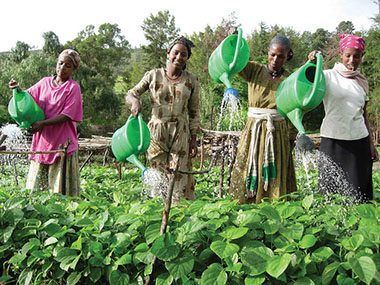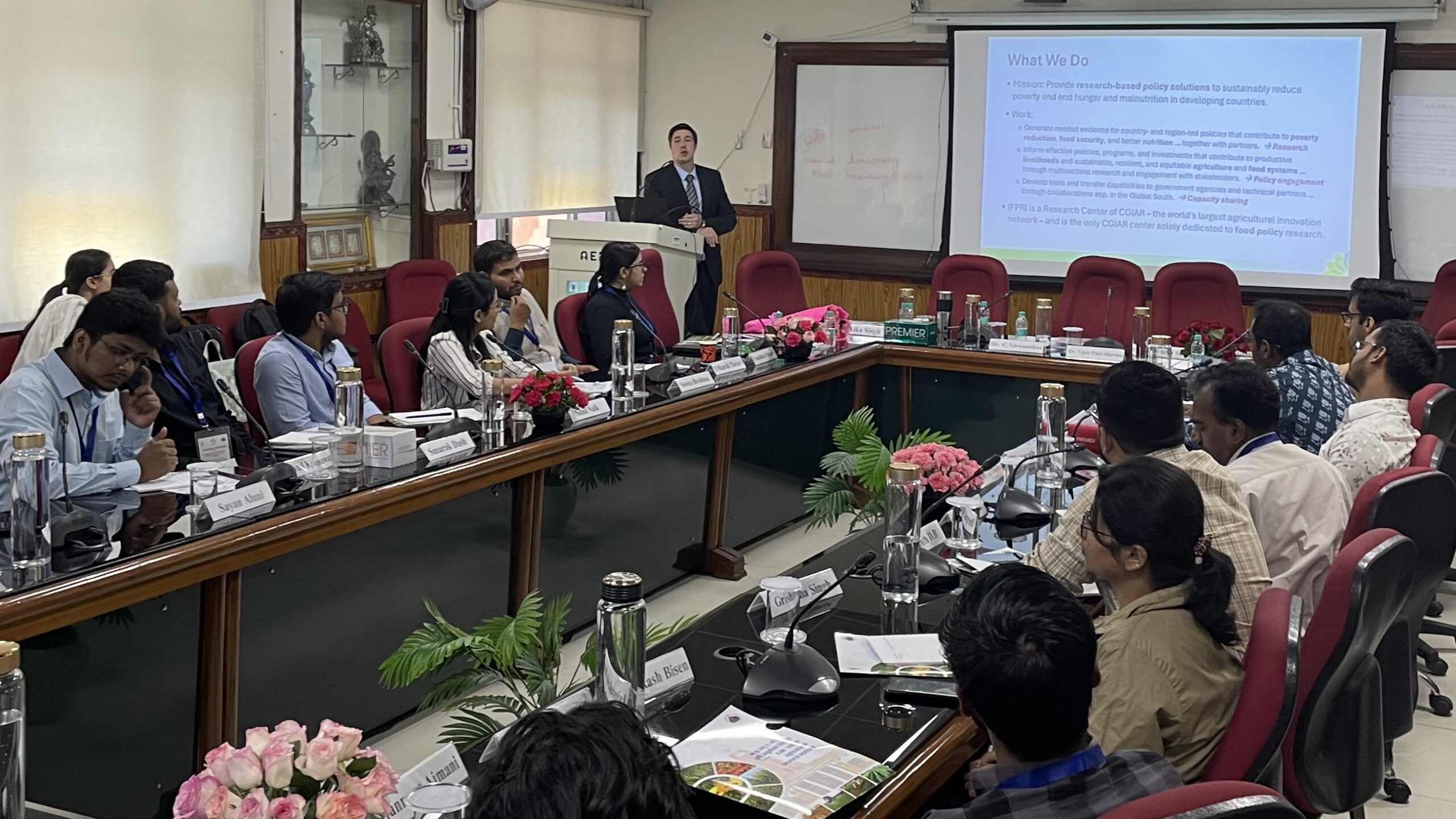The effects of climate change vary from region to region, but according to a new study from the World Bank, the majority of the global impact stemming from climate change will come through the water cycle. High and Dry: Climate Change, Water, and the Economy examines how scarce and variable water supplies will interact with growing global populations, rising incomes, and expanding urban areas and how smart policies and investments can reduce or eliminate the negative consequences.
According to the report, within the next three decades, the global food system will require an estimated 40 to 50 percent more water, municipal and industrial water demand will increase by 50 to 70 percent, and the global energy sector will increase its water demand by 85 percent.
Nearly a quarter of the world’s population lives in water-scarce countries. Under current policies and climate models, the report says, this water scarcity will only continue to increase, affecting areas where water supplies are not currently a challenge and significantly worsening in areas where water is already scarce. At the same time, warming oceans could result in increased storm surges and flooding of coastal areas. All of these effects will be most felt by poor people, many of whom rely on rain-fed agriculture for their food and livelihoods, live on marginal lands that are more prone to flooding, and lack adequate sanitation infrastructure to prevent water contamination. Urban populations will also feel the squeeze; as fresh water supplies decrease and competition from the agricultural and energy sectors grows, by 2050, water availability in cities could decrease by as much as two-thirds, says the report.
In addition to the humanitarian consequences, water scarcity has important economic impacts as well. Water is vital to production in every economic sector, and reduced water availability could slow growth and overall development. The report cites that some areas, mainly in North Africa, the Middle East, and the Sahel, could see a decline in economic growth of up to 6 percent of GDP by 2050 due to water-related losses in agriculture, health, income, and property. Water management policies will be key in determining if these losses occur – business-as-usual practices (such as inadequate regulation of common groundwater aquifers, leading to overuse) can make the negative effects of climate change even worse, while policies that enable and better incentivize the efficient use of water (such as investments in physical infrastructure for water storage) use can neutralize or even reverse those effects.
Thus, in the coming years, global policymakers will be faced with trade-offs between water requirements for food production, energy production, the environment, and urbanization. The report highlights three main priorities that can help countries become more water-smart and reduce the impacts of these trade-offs. At the same time, it points out that each country and region faces unique risks and conditions and will thus need to determine which combination of policies makes most sense for its specific situation.
The first priority is optimizing water use through better planning and incentives. One example of how this can be done is through the use of water permits, which give users the right to “sell” or “rent” water. However, such a system must be credible, fair, and transparent. In addition, determining how much water can be sustainably withdrawn in a certain area is difficult, as climate change increase rainfall variability.
The report also lists water pricing as another way to improve the allocation of water and efficient water use. Higher water prices have proven to be effective at reducing municipal water demand; at the same time, subsidies or block tariffs can ensure that poor populations are not priced out of the water market. Incentives can also be used to prevent waste; the report finds that 32 billion cubic meters of clean water is lost in cities around the world every year due to leaks in municipal water pipes; half of these losses occur in developing countries, where water supplies are already often unreliable. Providing incentives for utility companies to fix these leaks can be an important step in preventing this significant wastage.
The report points out, however, that the use of policies like water permits and pricing also face significant challenges, largely due to worries that poor populations will be left out of services. Thus, any policy put in place needs to be transparent and equitable.
The second priority is expanding water supply and availability whenever possible. This goal includes increasing investments in infrastructure such as dams that store water until it is needed, as well as in wastewater recycling programs and desalination programs. These tools are high-cost, however, and are not without risks; other tools such as wetlands preservation may be a better option in some countries, as they come with lower costs and risks. In addition, policymakers need to be careful that increased supplies do not lead to increased demand. The report finds that new storage infrastructure in arid regions often encourages the cultivation of water-intensive crops, resulting in increased water dependence. Ameliorating this effect can be done by using complementary policies to promote efficient water use and improve water allocation to productive sectors, as outlined in the first priority.
The third priority is reducing the impact of weather extremes and variability and uncertainty in the water supply. The report refers to this as “water-proofing” economies; this strategy includes increasing storage capacities and water recycling systems, as well as engaging in better urban planning and risk management programs. In rural areas, crop insurance programs play a large role in protecting farmers from weather shocks; investing in physical infrastructure like seawalls, levees, and damns can protect coastal areas from storm surges and flooding. These policies must be carefully targeted and designed to meet the needs of each specific area, however.
Countries should also focus on developing or upgrading meteorological and early warning systems to help plan for changing weather patterns and significant weather events. Improved short-term forecasts can help populations prepare for storms and evacuate if needed, while improved longer-term forecasting can help farmers make more informed cropping and irrigation decisions, thus helping to ensure food security in the face of changing weather. Communication between researchers and communities needs to be improved as well so that these improved forecasts reach the populations that need them.







